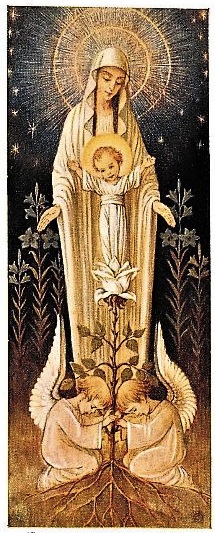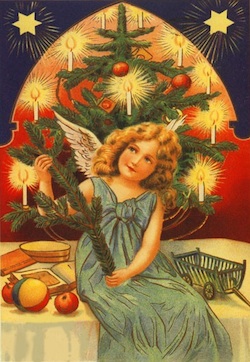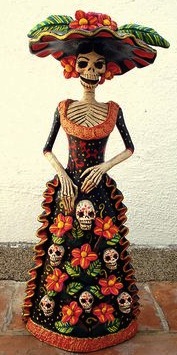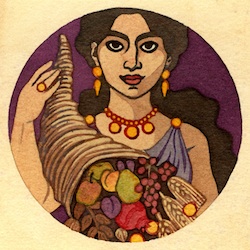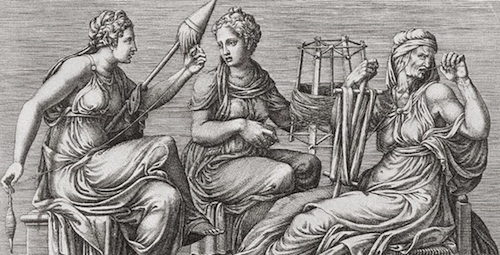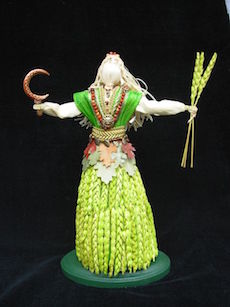As you might expect, I have alerts set up for all kinds of Isis-related topics. Every now and then, something interesting comes up. On this day after Thanksgiving, I’d like to share a couple of them with you.
Isis Magic is FAST

That’s Isis Magic out in front.
The other day, an alert came across for “Isis Magic” that amused me. Turns out there’s an Isis Magic that isn’t a book, but rather, an Australian racehorse. She’s a five-year-old mare with a 57% “win percentage” and a 64% “place percentage.” So she’s a winning horse, too, and is supposed to be able to run very fast for a very long time. Isis has endurance! I have no idea how Isis Magic got her name, but I sure would like to know. Anybody have an inside information on that?
New Isis temple uncovered in Egypt

Workers building a housing project found an Isis temple. Scary seeing that shovel scooping up pillars with hieroglyphs.
Earlier this month, workers who were building a residential project in the area of Tell Atrib near Egypt’s Banha City unearthed the remains of a pharaonic Temple of Isis. Tell Atrib is in the southern delta, about 30 miles north of Cairo. In Greek, it was known as Athribis. In ancient Egyptian it was Hwt-ta-ḥry-ib, “the place over the heart”. The heart of Osiris was supposed to be located there.
The city may have been established as long ago as the Old Kingdom, but our physical evidence so far only comes from the 12th dynasty. It was once capital of the 10th nome, Kem Wer, the “Great Black One,” named for the sacred black bull that was kept there and associated with Osiris, the black-faced Lord of the Dead. The city was most prominent in the Ptolemaic and Roman periods.

The Temple of Isis in the Place over the Heart
However, the earliest Deities of the Heart City were Khentikhety, a crocodile God, Who was said to have found the heart of Osiris and watched over it, concealing it beneath His own heart. Khentikhety is paired with Khuyet, a winged Goddess Whose name means “Protector.” Eventually, Khentykhety was assimilated to Horus. I haven’t found out for sure yet, but it would seem reasonable that Khuyet would have been assimilated to Isis, though we also have at least one reference to Khuyet protecting Isis Herself.
And that’s what I’ve got for now!
Except for this PS from my publisher, who has asked me to remind you that Isis Magic (the book, not the horse) is available from Abiegnus House…and makes a great gift for any Isis-interested folks on your list. Just click on the book on the right. Thank you so much!
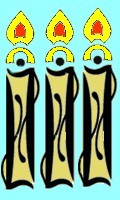 The Feast of Lights, also known as Luciad, celebrates the vow of the Daughter to take the light of the Divine even into the deepest and darkest places of manifestation. Candles and snowdrops are associated with the day, reminders of the Daughter's gentle light.
Continue reading about Luciad
The Feast of Lights, also known as Luciad, celebrates the vow of the Daughter to take the light of the Divine even into the deepest and darkest places of manifestation. Candles and snowdrops are associated with the day, reminders of the Daughter's gentle light.
Continue reading about Luciad  The Feast of Lights, also known as Luciad, celebrates the vow of the Daughter to take the light of the Divine even into the deepest and darkest places of manifestation. Candles and snowdrops are associated with the day, reminders of the Daughter's gentle light.
Continue reading about Luciad
The Feast of Lights, also known as Luciad, celebrates the vow of the Daughter to take the light of the Divine even into the deepest and darkest places of manifestation. Candles and snowdrops are associated with the day, reminders of the Daughter's gentle light.
Continue reading about Luciad 



